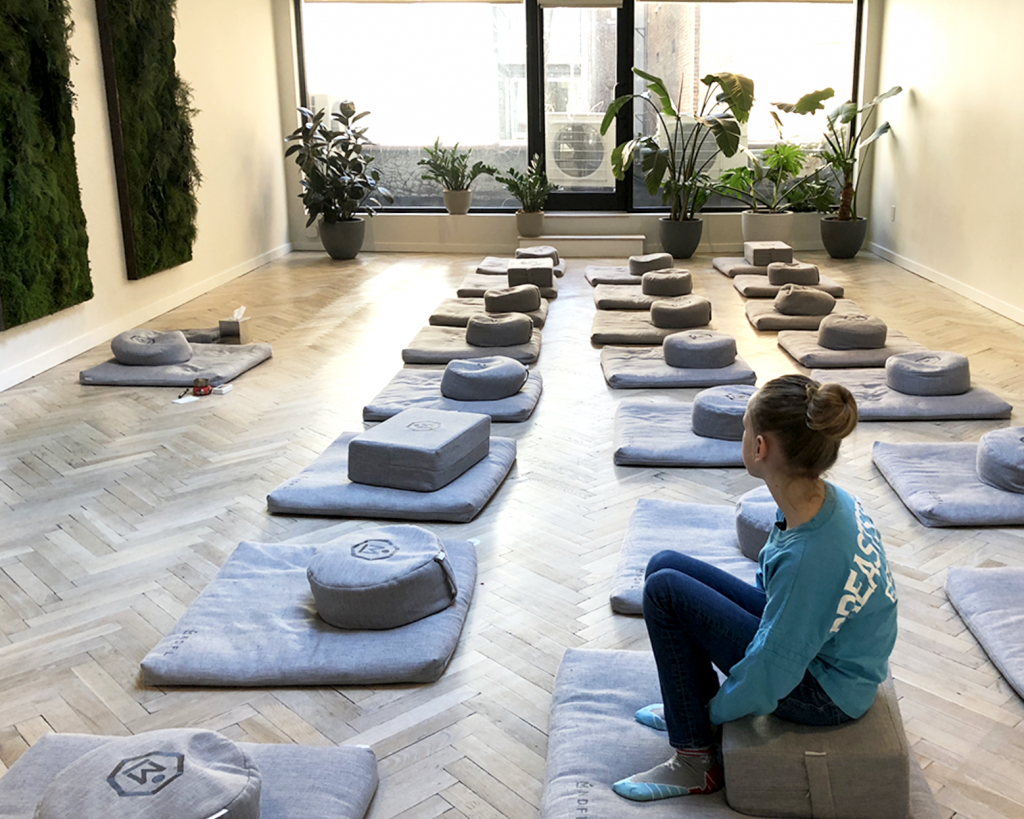Recently when traveling for business to NYC, I took time out of a busy morning to attend a meditation session at MNDFL, my favorite meditation studio in the city. I had a jam-packed day of meetings, presentations, emails, and never-ending to-do lists, so I wanted to ground myself before getting carried away with the hustle and bustle of a busy schedule and mind.
Boy, am I glad I did.
The session focused on how to deal with difficult emotions—those mentally disruptive feelings of anger, sadness, or anxiety that pop-up throughout the day and threaten to send your blood pressure and monkey mind into a tailspin. During the class, the meditation instructor explained that we should strive to be as aware of our emotions as we are of the weather.
We watch the weather forecast so we know when bad temperatures, rain, storms, and natural disasters strike; this helps prepare us for wonky weather. The same is true of our emotions.
When you’re not paying attention to the anger brewing in your marriage, you’ll feel unprepared and shocked when you find yourself crying uncontrollably over lunch with a girlfriend. If you suffocate your feelings of inadequacy at work, you’ll undoubtedly be caught off guard when you get into a full-on argument with your boss over your newest assignment. Just as you acknowledge the weather forecast, it’s time to acknowledge your negative emotions.
Scary, I know.
Here’s a tried-and-true method I’ve been using to get there myself. I refer to it as a triple threat for owning your emotions instead of allowing them to own you.

Step 1: Notice the emotion. This might sound easy, but if you tend to hide, deny, or ignore difficult emotions, then this step will feel like installing an infant car seat into the back seat of your car: in theory it sounds easy, but it’s actually hard as hell.
Rather than ignoring emotions like frustration or anger by numbing them with another glass of red wine or task on your to-do list, your mission will be to acknowledge the presence of difficult thoughts.
For example, the next time frustration shows up in your life, quietly say to yourself, “Right now, I’m feeling frustrated.” What you’ll find is that the emotion has much less power over you when you acknowledge its existence. Why? Because awareness that your mind is running away from you is the first step to getting it back.
After acknowledging the emotion is present, allow yourself to feel it. The way I do this is by saying to myself, “I’m feeling frustrated right now and that’s Okay. A lot of people experience frustration.”
Step 2: Get curious about the emotion. It’s critical to expect difficult emotions to bubble up in your life—and once you accept that fact, you can start getting curious. For example, when it comes to feeling angry, how does that emotion show up in your body? Meaning, does your stomach hurt or do your lungs tighten, making it hard to breathe? And how does it show up in your life?
For example, around your partner, children, or boss? Are there any clues about when in the day your anger shows up—first thing in the morning or late at night? The purpose of curiosity is to put together clues about the bigger picture of this emotion. For example, if you notice that your anxiety is highest in the morning, maybe you can tweak your routine and start listening to a 10-minute guided meditation first thing, before tackling your to-do list.
In some ways, this exercise is like the popular board game, Clue. Only instead of determining a crime committed by Mrs. Peacock in the library with the lead pipe, you’re learning that your sanity is being murdered by anxiety, first thing in the morning, in your bedroom.
Step 3: Avoid identifying as the emotion. This last step is a real zinger, and it’s what spiritual gurus call, “non-identification.” Meaning, when you’re stressed about a big meeting, you are not anxious, you are feeling anxious. When you’re upset about your daughter’s latest food allergy, you’re not frustrated, you’re feeling frustrated. See the difference? You are not your emotions. You are a human being feeling emotions.
If you believe you are your emotions (I am angry, I am frustrated, I am sad) then of course they’ll take over. You’re practically letting them with those very proclamations.
From now on, rather than thinking, “I am frustrated or I am sad,” start saying, “Hello, frustration,” or “Hello, sadness” instead. The very act of saying “hello” to your negative emotions is a game-changer. Here, you’re telling yourself that of course frustration comes up in life. And as soon as you say, “Hello, anger,” the anger loses its control, and you can deal with it practically by taking a walk around the block, as opposed to denying its existence.
So, there you have it. A triple threat against your emotions controlling your life like a runaway train. And the best part is that the entire process can be done in less than 60 seconds! Right when you notice a tough emotion, you can immediately (1) notice it’s there, (2) get curious about it, (3) remind yourself that you are not the emotion.
Just like you don’t want to get caught unprotected in the rain, the goal with this work is not to avoid the rough weather, but see it coming and plan accordingly. I promise your day will be brighter as a result.






